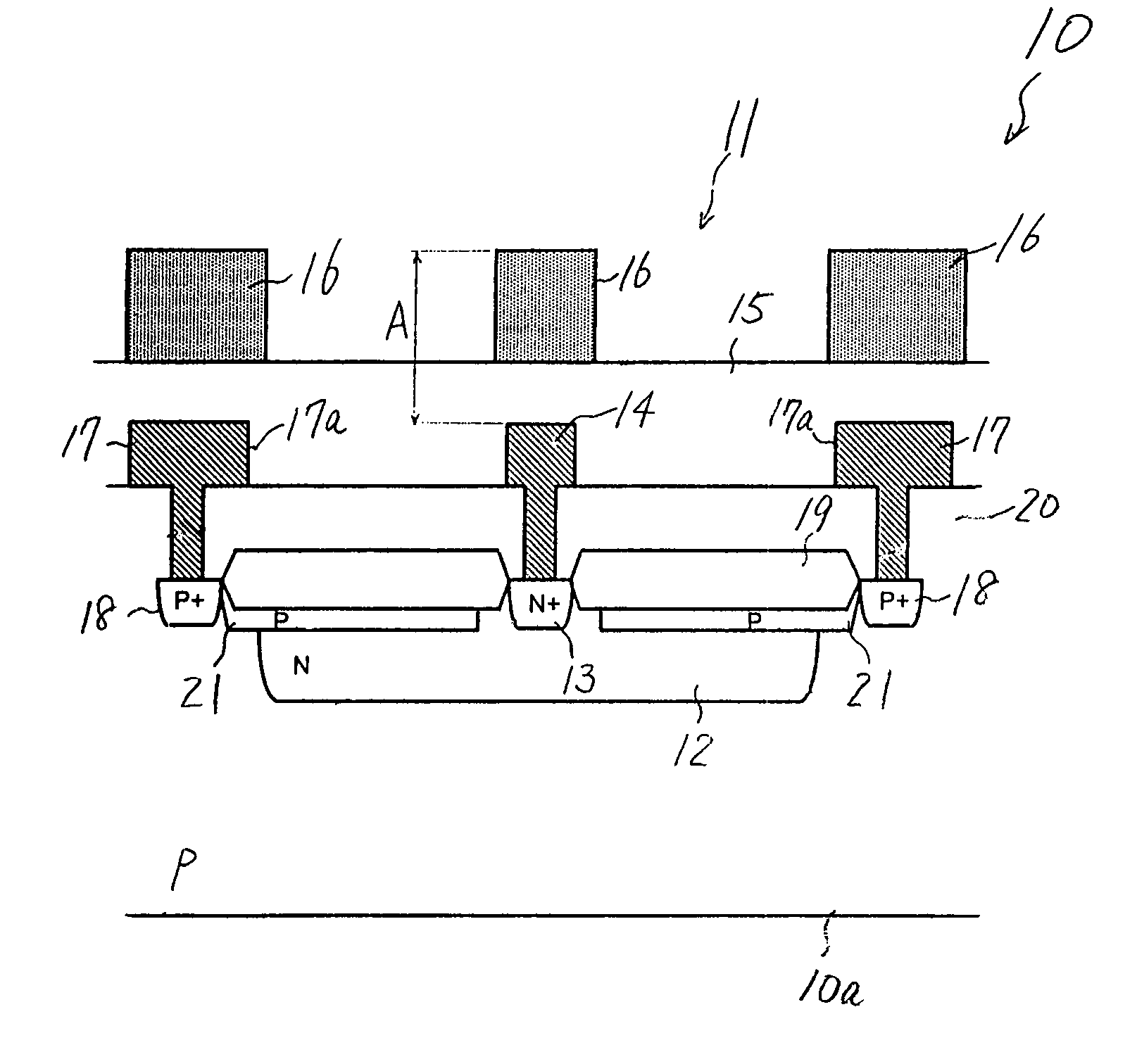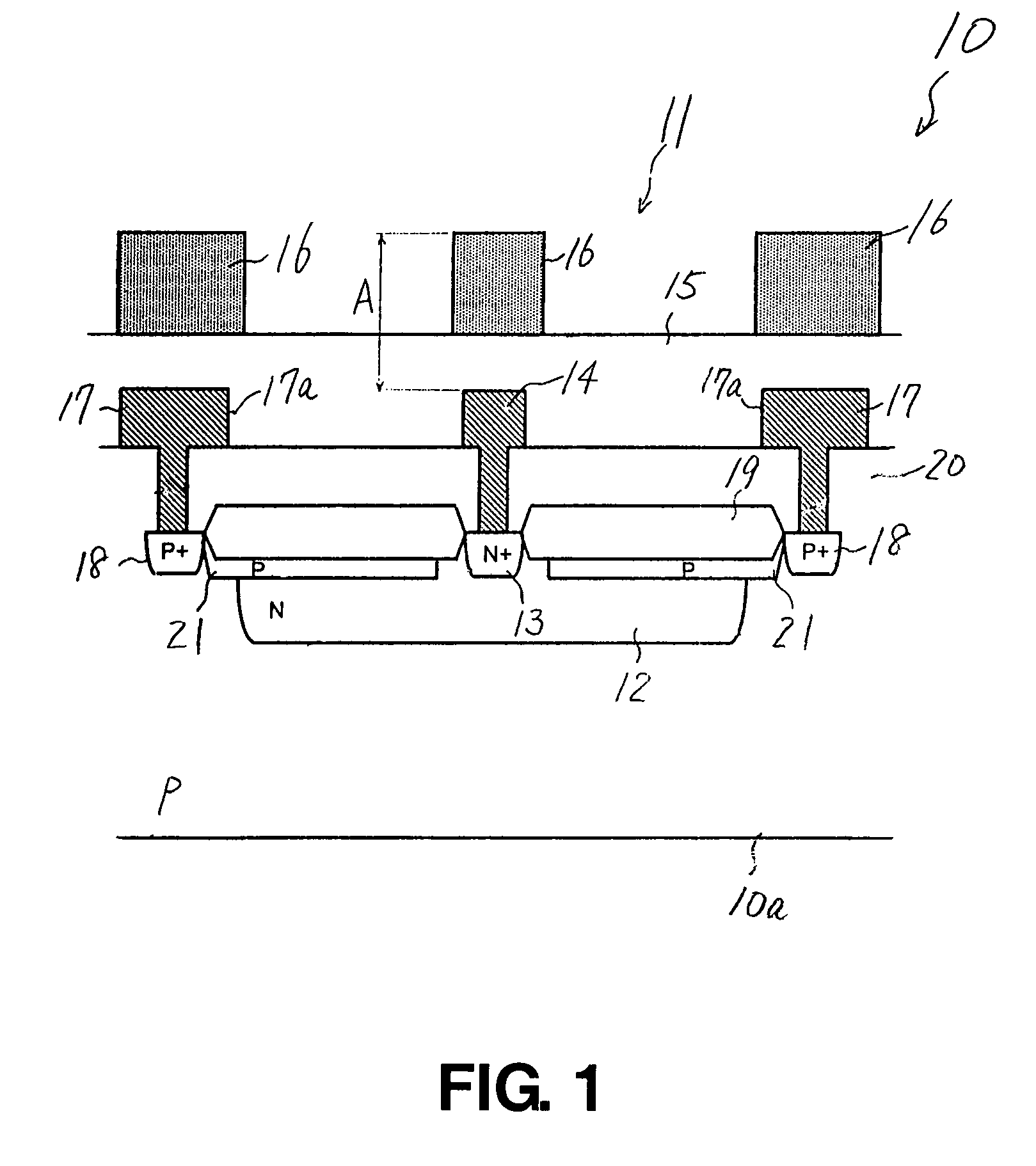Photoelectric conversion device and image sensor
a conversion device and photoelectric technology, applied in the direction of semiconductor devices, basic electric elements, electrical appliances, etc., can solve the problems of reducing the manufacturing steps and resulting cost, conductive contaminant may be stuck to the upper surface, and reducing the sensitivity, so as to prevent the reduction of the sensitivity of the photodiode, reduce the manufacturing time, and suppress the increase in capacitance
- Summary
- Abstract
- Description
- Claims
- Application Information
AI Technical Summary
Benefits of technology
Problems solved by technology
Method used
Image
Examples
Embodiment Construction
[0015]Hereinafter, an embodiment of the present invention will be described with reference to FIG. 1. A photoelectric conversion device 10 according to this embodiment includes a first conductivity type semiconductor substrate (first semiconductor region) 10a, a second conductivity type semiconductor region (second semiconductor region) 12 provided in a pixel region 11 of the semiconductor substrate 10a, for storing a signal charge, interconnecting portions 13 and 14 for connecting the semiconductor region 12 with a circuit element (not shown) provided outside the pixel region 11, and an organic film 16 provided above a portion of the interconnecting portions 13 and 14 located in the pixel region 11 through an insulating protective film 15.
[0016]In the example shown in FIG. 1, the semiconductor substrate 10a is set as a P-type region and the semiconductor region 12 is set as an N-type region. A light-shielding layer 17 is provided on a surface side of the semiconductor substrate 10a...
PUM
 Login to View More
Login to View More Abstract
Description
Claims
Application Information
 Login to View More
Login to View More - R&D
- Intellectual Property
- Life Sciences
- Materials
- Tech Scout
- Unparalleled Data Quality
- Higher Quality Content
- 60% Fewer Hallucinations
Browse by: Latest US Patents, China's latest patents, Technical Efficacy Thesaurus, Application Domain, Technology Topic, Popular Technical Reports.
© 2025 PatSnap. All rights reserved.Legal|Privacy policy|Modern Slavery Act Transparency Statement|Sitemap|About US| Contact US: help@patsnap.com


